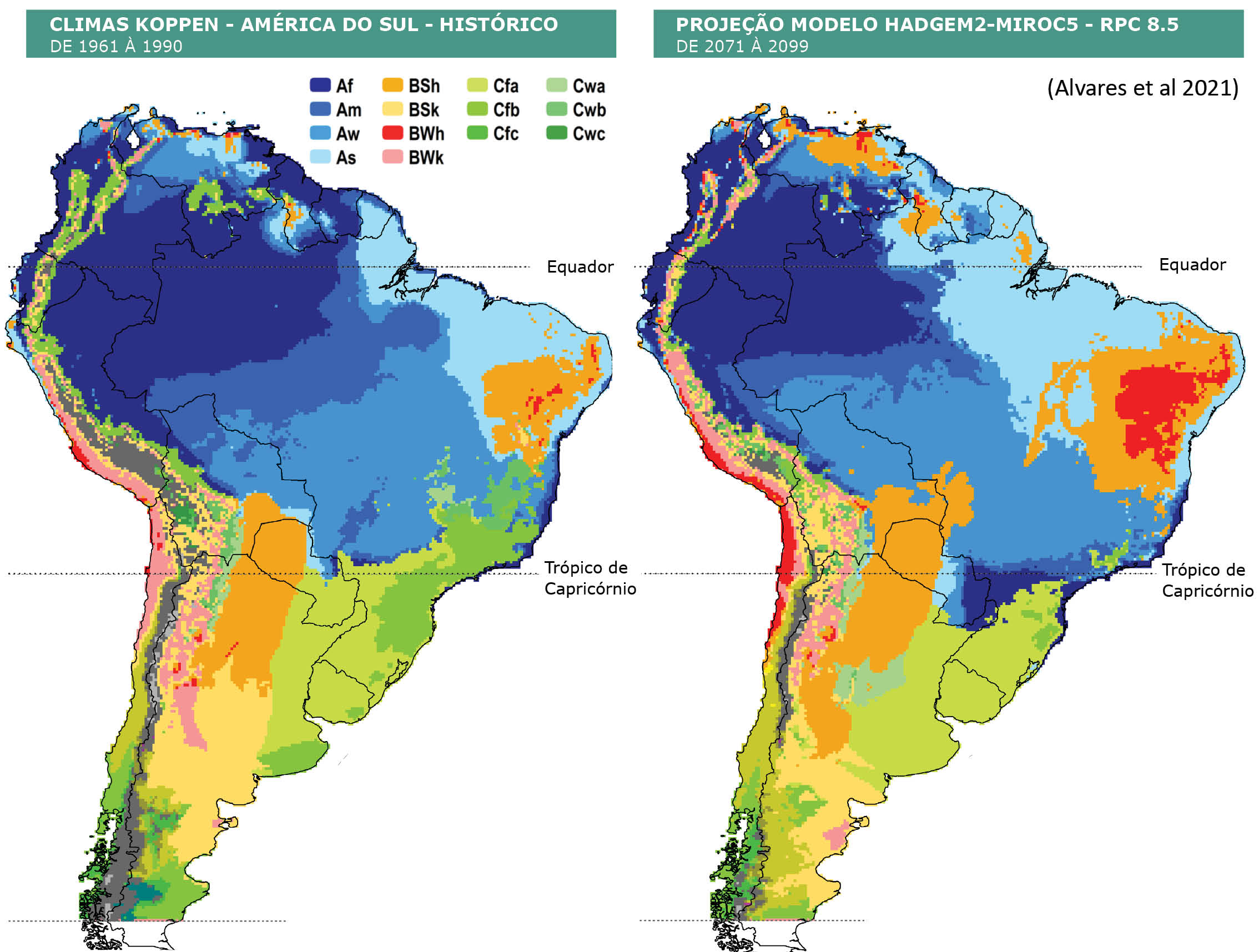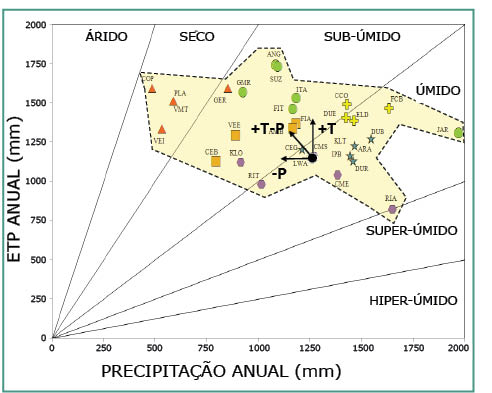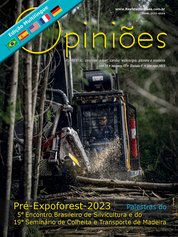José Luiz Stape
Postgraduate Professor at the Paulista State University in Botucatu
OpCP72
Change and Brazilian forest productivity
The productivity gains achieved by the Brazilian forest sector, notably in eucalyptus cultivation , between the end of the 1960s and the 1990s, were significant, jumping from an average of 15 cubic meters per hectare per year to more than 45 cubic meters per hectare per year. year. These gains are credited both to improved management (soil preparation and fertilization, protection against weeds and pests) and to genetic improvement (via seminal or clonal forests).
During this period, experiments focused only on final productivity (deterministic approach), without major designs or hypotheses about the growth process forests ( ecophysiological approach ), and they were successful because the forest cycle was fast and there was still plenty of resources for the growth of the genotypes.
After the first decade of 2000, there was a “stagnation”, or even a drop, in forest productivity, which put a brake on the “expectations” of increasing gains in the sector, imposing a reality already vaunted by the area of ecophysiological modeling since the beginning of the 1990s with studies on irrigation and fertilization of forests and their procedural modeling.

Fortunately, the forestry sector had, via cooperative programs the Cooperative Program on Eucalyptus Potential Productivity and the Cooperative Program on Clonal Eucalyptus Tolerance to Water and Thermal Stresses in the Institute of Research and Forest Studies, started since 2001 the real search for forest growth controls, whether genetic or available abiotic resources (water, temperature, nutrition, radiation) or harmful biotic factors (pests and diseases).
Such projects have clearly identified that, with the exception of adequate choice, preparation and fertilization of the soil, water resources ( water deficit ) and thermal (high temperatures) are the main causes of restriction or decline in forest productivity , and that there is an extreme and significant Genotype versus Environment interaction.
At the same time, cooperative forest protection projects such as the Cooperative Program on Forest Protection of the Institute of Research and Forestry Studies recorded the effect on the drop in productivity of forests with clones susceptible to new pests and diseases, mainly exotic ones.
These studies thus showed how necessary an “Experimental Network” is to understand how environmental phenomena affect clones, now mapped to the genomic level . Thus, new networks emerged, such as the G2M2P2 Network ( Stape et al 2019, 2023 ) testing more than 200 eucalyptus clones in 18 edaphoclimatic regions in the North, Northeast and Southeast.

The highlighted figure shows that in all 18 sites studied, there are always clones more productive than clone I144 (the most planted in Brazil), showing that there is potential to improve national productivity, under the current climate, provided there is due sharing and correct allocation of Genotype versus Environment .
With such wide networks, it is still possible to carry out studies with environmental variables in a “continuous” way and their effects on genotypes, meeting the new lines of research in Genotype versus Environment associated with the spatialization of results via a genomic mesh, the “ Environments ” ( Resende et al 2019 ).
These scientific-technical and operational challenges of maintaining or increasing productivity that already exist “under the current climate” become even more complex when we incorporate the future uncertainty of the climate environment in which future forests will grow. The so-called climate changes represent the increase in energy in the atmosphere with the trapping of more heat by greenhouse gases, leading to changes in climate patterns (rainfall, temperature, wind, relative humidity) and the increase in their extreme variations. Regardless of the cause, whether anthropic (due to deforestation and the use of fossil fuels) or natural, the important thing from a forest standpoint is knowing how to buffer its effects when and where they occur.
The maps of South America illustrate what a “drastic” climate change in Brazil means spatially, among the various models and possible scenarios, showing the expansion of drier and erratic Koppen climate types such as those of the semi-arid ( Hot semi-arid climate , Hot arid climate ) and tropical climates with a dry period (Savanna climate, Monsoon climate) over subtropical climates, indicating situations of greater water and thermal stress.
In this way, the expectation and predictability of productivity become more space-specific (where?) and time-specific (when?) and both associated with scenario probabilities. Thus, it seems to us that there is not much that can be pragmatically done. But there is, and it is the wide Genotype versus Environment Experimental Network . Thus, an Experimental Network, well designed in terms of genetic coverage (number of clones or parents) and environmental scope (number of edaphoclimatic sites ) will provide not only the characterization of the performance of genetic materials in current environments (shown in the first highlighted illustration), but to provide environmental “interpolation” between the sites.
The featured image, derived from the Cooperative Program on Tolerance of Clonal Eucalyptus to Water and Thermal Stresses network from the Institute of Forestry Research and Studies, shows that the site identified as the black dot would climatically move towards different sites if there is a reduction in precipitation , temperature rise, or both. With this, it would be known which clones would become “no longer recommended on the site” and which clones would become “recommended on the site”.

Everything seems simple, but it is not. Planning and managing such a network requires strong scientific knowledge of the management environment, and genomic improvement, with the union of these areas necessarily made by the physiology of the trees and the ecosystem, via ecophysiological models , which are increasingly complete and better parameterized.
And we believe, without a doubt, that if there is a country with an enormous capacity for joint, cooperative work, it is Brazil. However, we are in need of more forestry science and education so that we know how to use and interpret the huge databases that are already available today, and the even bigger ones that will come with powerful designs like this one.
Finally, a great facilitator for the validation of these models and initiatives is orbital management, that is, the continuous tracking under different optical channels of the canopy of our forests, capturing their state of development, stress and health, and which feed back and accelerate knowledge space we need to face climate change in a preventive, rational and objective way. The importance of the forestry sector is such that it is our opinion that we cannot postpone these large experimental plans at the national level even further.




